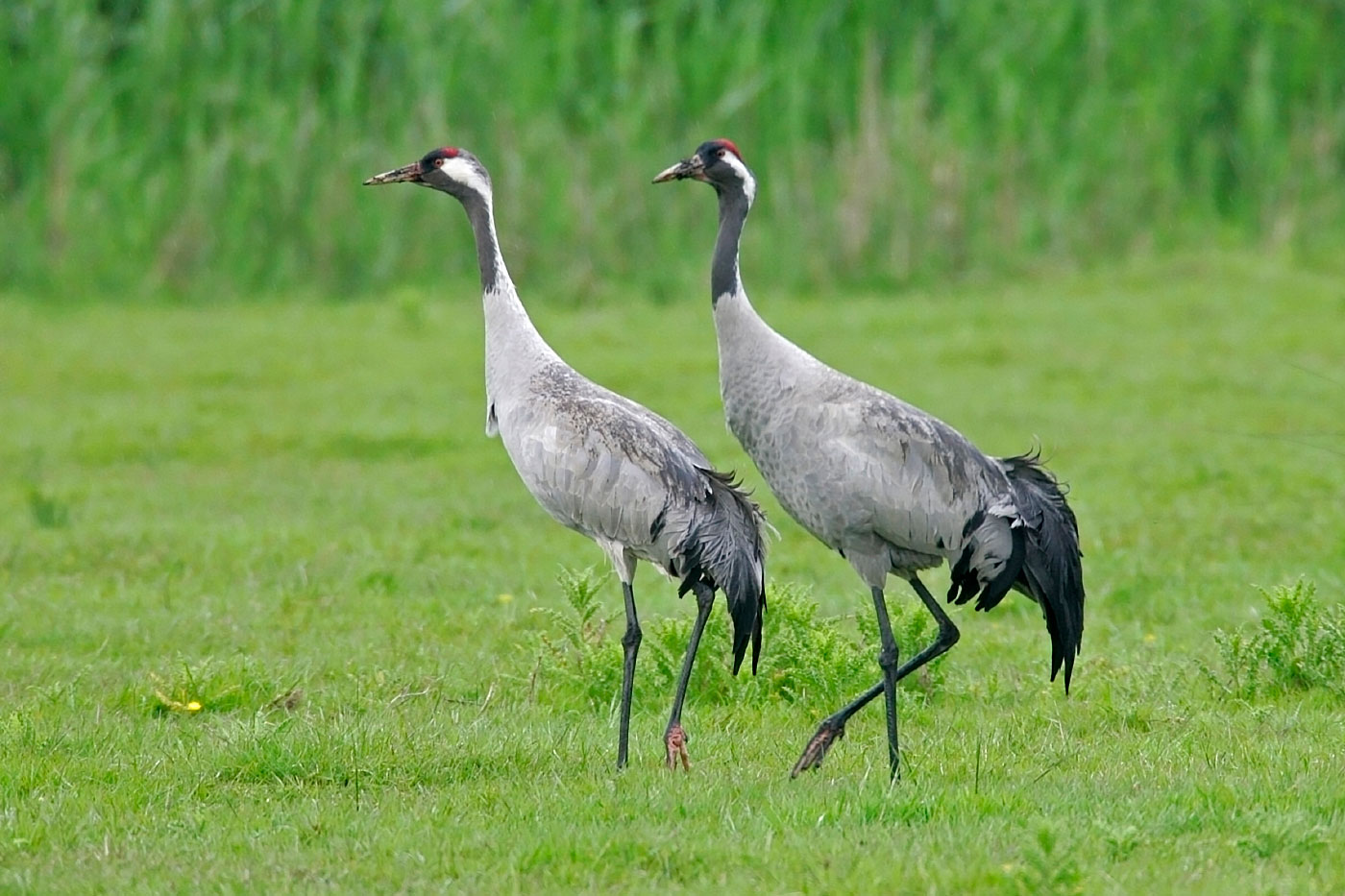British cranes increase again
The latest national Common Crane survey has revealed that 2020 was another record-breaking year for the species in Britain.
A total of 64 breeding pairs in 2020 comfortably eclipses the 56 couples in 2019 and 54 in 2018, both of which were modern-day records at the time. This brings the total British population to more than 200 birds.
Common Crane became extirpated in the UK around 400 years ago due to wetland habitat loss and hunting pressures, but following a natural recolonisation and subsequent conservation work, including a reintroduction programme, numbers are now flourishing once more.

Common Crane continues to increase in Britain, with 64 pairs breeding in 2020 (Andy Hay / rspbimages.com).
In 1979, a small number of wild cranes returned to Norfolk. The species has now spread to other areas of the UK, benefiting from improved habitat at reserves such as the RSPB's Lakenheath and Nene Washes. More than half of all the cranes fledged in the UK since 1980 have fledged since 2015 - the past five years have been incredibly productive.
In 2010, the Great Crane Project – a partnership between the RSPB, WWT and the Pensthorpe Conservation Trust, and funded by Viridor Credits Environmental Company – began creating and improving existing habitat, as well as hand-rearing young birds for release on the Somerset Levels and Moors.
Consrvation efforts, which have also included peatland restoration and wetland protection, have yielded impressive results, with the 64 pairs across the UK in 2020 producing 23 chicks. Nature reserves have played a vital role. At least 85% of the breeding population are found on protected sites, with a third on RSPB reserves.
Damon Bridge, Chair of the UK Crane Working Group said: "The return of cranes to the British landscape shows just how resilient nature can be when given the chance. If we want to see this success continue then these sites that cranes use and need must get adequate protection."
Andrew Stanbury, RSPB Conservation Scientist, added: "Thanks to the dedication of individuals, the UK Crane Working Group and conservation organisations, we are delighted to see crane numbers continuing to grow. Government has already highlighted cranes as one of a number of species which have yet to receive strong protection for the areas they make their home. If we want to see this amazing achievement repeated across the UK, Governments must take action to designate the most important sites for this iconic species as part of the UK's protected area network."
John Blackburn of the Norfolk Wildlife Trust commented: "This is a result of the improvements and expansion of important wetland sites. The Norfolk Wildlife Trust is proud that our Broadland reserves, are not only the cradle of our growing crane population, but still their favoured stronghold, and is testimony to NWT staff's commitment."

